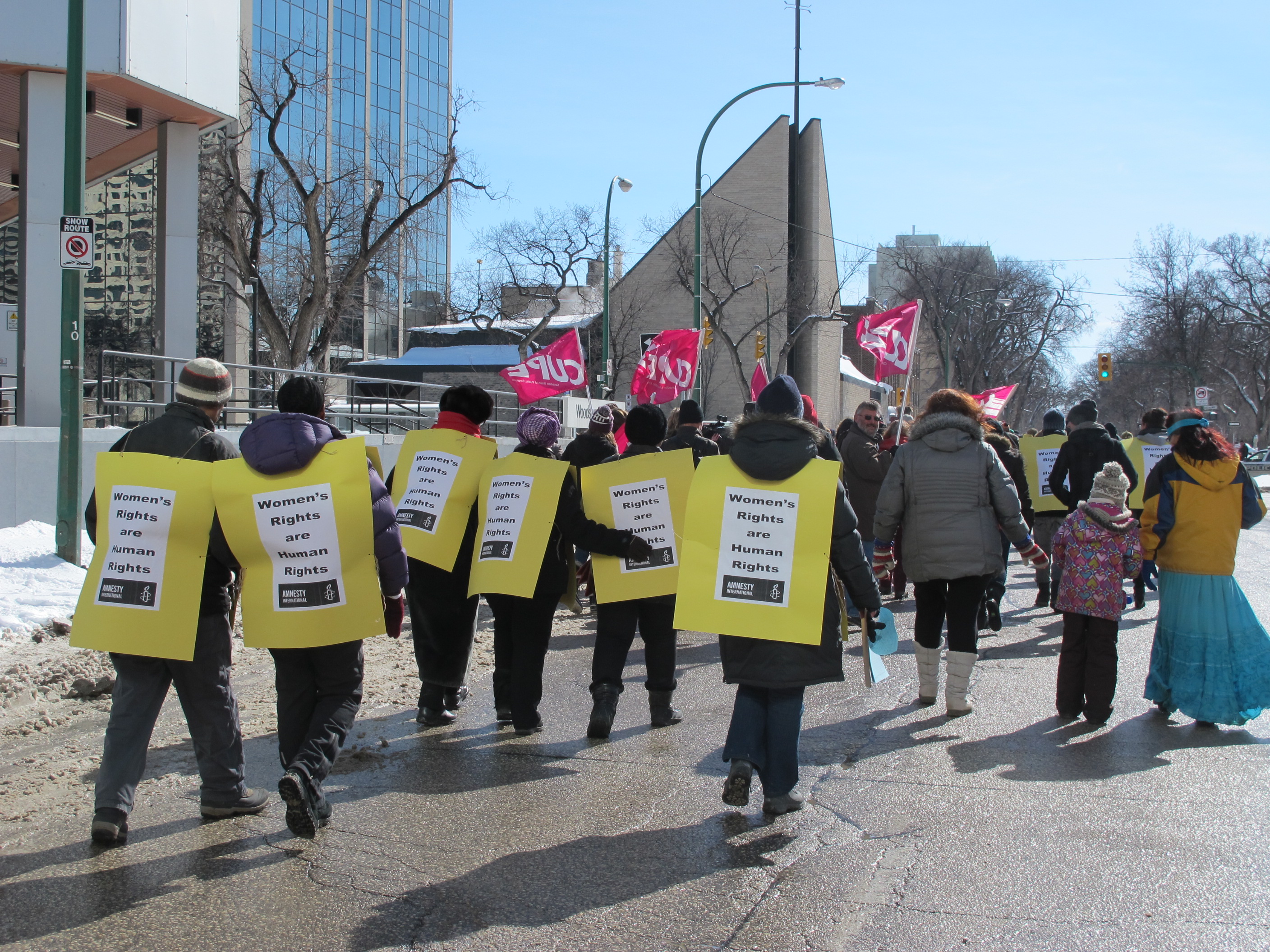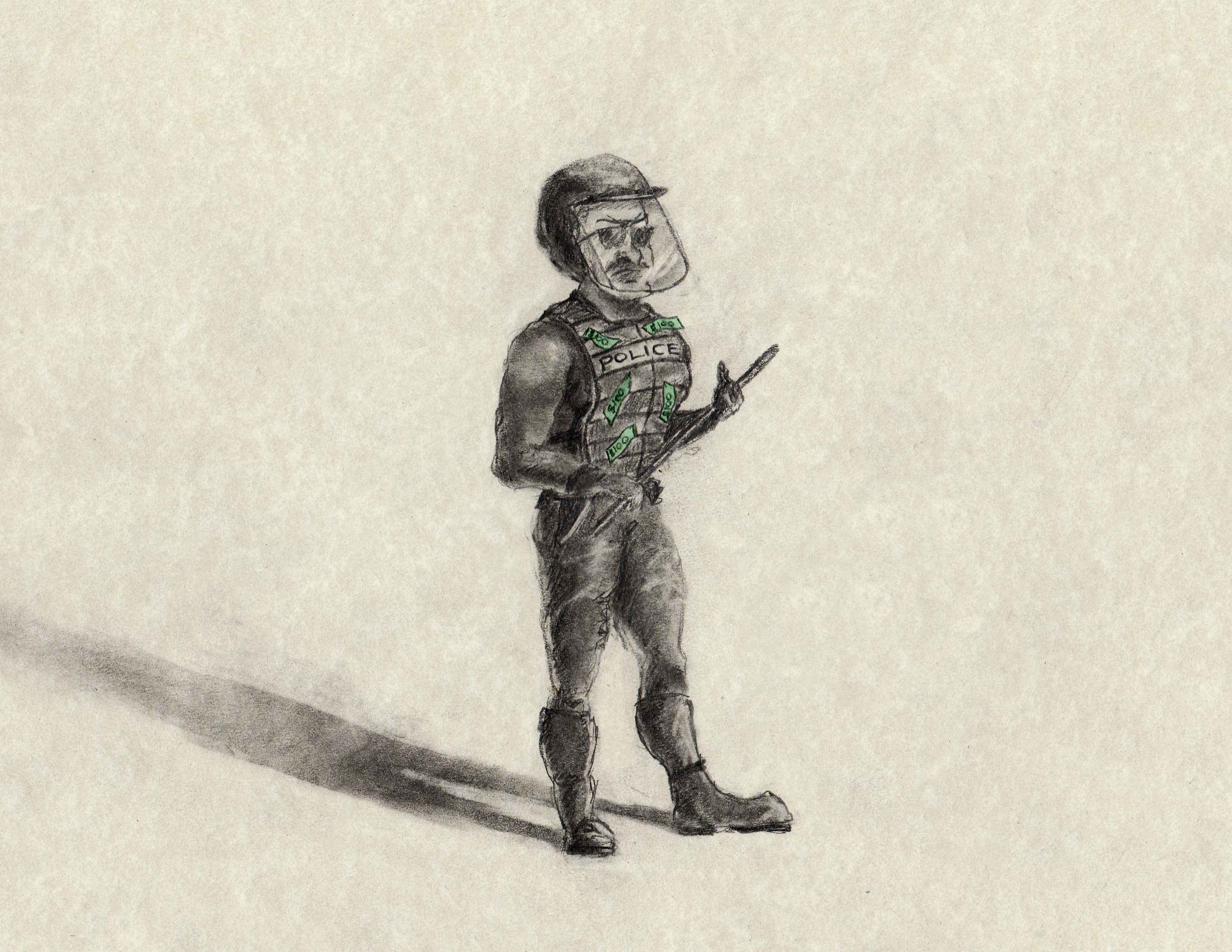Many events held in the name of International Women’s Day (IWD) spilled beyond the bounds of Mar. 8 and into a weeklong series, or at least weekend-long string of gatherings. Beyond the common thread of Women’s Day, topics taken up across the city varied as much as the organizing groups themselves.
Women’s voices were brought to the forefront throughout the city – through speeches, panels, documentaries, performances, and more. As not all women are speaking from the same experience, depending on which voices you heard, different perspectives on IWD could be found.
Young indigenous feminists call for support
The Native Youth Sexual Health Network (NYSHN), in partnership with Ka Ni Kanichihk, presented the Manitoban premiere of the film Young Lakota on the evening of Mar. 7. The documentary followed young reproductive justice activists in South Dakota as they became involved in tribal politics and developed their voices. Panelists discussed how the film related to their own experiences of indigenous youth leadership following the screening.
Alexa Lesperance, a youth facilitator for the NYSHN, spoke to the importance of having young indigenous women telling their stories and breaking down stereotypes. She countered the myth that young indigenous women need “saving,” while what they really need is support.
“We are the experts of our bodies and [of] what our communities need,” said Lesperance.
The panelists acknowledged the struggles that had been faced by older activists who lived through the era of unsafe back-door abortions.
“We have the privilege of not having lived in that time,” said NYSHN executive director Jessica Danforth. And yet she spoke to the pressing need for support in everyday life, calling on the audience to stop and support somebody else.
Danforth and Lesperance also highlighted the necessity of access to services and spaces that are culturally safe, meaning that “we have the right to talk about our culture, our spirituality, and our own communities when we talk about our bodies.”
This was echoed by Aboriginal midwifery student Melissa Brown, who related her own experience of only seeing Aboriginal faces on the walls of the hospital, and not in her care providers. She emphasized the need for more Aboriginal health-care workers so that “people can see themselves there.”
Reflecting on the film and subsequent discussion, Niki Ashton (MP for Churchill) recognized the need for similar opportunities for connection.
“We need to come together, we need to reconnect, we need to continue the conversation because [ . . . ] the conversation about how to take things away from us or keep us back is definitely not just taking place, but it’s being acted upon,” said Ashton. “I work at the federal level, and it’s pretty hostile times for anyone that believes in equality.”
In the eyes of the panelists, IWD is not a one-off event; women’s day is every day.
Conversation, celebration, and inspiration from the street
The broad theme of the IWD march held on Mar. 8 was to highlight gains achieved by womens’ movements, while simultaneously raising awareness of the work that has yet to be done. In the same vein as the march organizers, Sharon Blady (Minister of Healthy Living and Seniors) defined her view of IWD as “A day of celebration of what we’ve accomplished, and a call to battle for what we have yet to accomplish.”
Beginning with remarks from speakers at Portage Place, the march drew approximately 200 people, and was led by an indigenous drumming circle riding on the back of a pickup truck. It drew representatives from Amnesty International, CUPE, and the Manitoba Federation of Labour, to name a few.
As the column of marchers coalesced into a crowd outside Union Centre, a member of the police escort wove through the crowd and requested that marchers abandon the street in favour of the sidewalk. “We’ve got the Jets game in 20 minutes,” she said – a poignant reminder of the limited space allowed to this public display.
With the melody of “Solidarity Forever” still hovering in the air, marchers filed inside to enjoy snacks and more speakers.
The organizing committee for the march was an intergenerational affair, with younger students pitching in alongside older labour activists. They chose to conclude the event by highlighting younger women’s voices who “bring something that we [ . . . ] won’t hear in mainstream media, and that is essential and being talked about in feminist spaces,” said co-organizer Claudyne Chevrier.
Raven Hart-Bellecourt spoke of empowering other women and young girls for leadership, as she does by bringing her young daughters along with her to meetings and marches.
Hart-Bellecourt named the university as “an uncomfortable space to be in to stand and talk and speak [her] truth.” This sentiment was echoed by Bilan Arte, who recounted her frustration with hearing racist comments made by professors.
Hart-Bellecourt and Arte also spoke of the strength they find in each other, through finding support in an environment that can be otherwise hostile. Although they may “walk in different shoes and have different roles to play” in their friendship, they celebrate their differences and support each other as allies.
Chevrier reinforced the importance of having these conversations, and to have them be accessible. “One of the things that I like about International Women’s Day is that it’s very broad and mainstream,” said Chevrier. “Activist and radical spaces can be spaces that are terrifying, because there’s a code and there’s a language that’s really driven by academics.”
She hopes that IWD marches can offer a way in to ideas that may not be found elsewhere, and encourages others who haven’t been to marches or rallies before to try it out: “You don’t have to have the perfect language and you don’t have to have anything, you just show up.”
For some, the act of marching in itself is an important marker of visibility, “because [a march] is a traditional form of radical action, a symbol of past feminist action that is maintained today,” said Lissie Rappaport. “I think as more feminist work becomes paid [ . . . ] it remains feminist, but it is inhibited by funders, by visions and missions of organizations, and it disappears from the street.”
And while the march is somewhat “mainstream” because it is run by a small group of volunteers, it is more open to change than in other urban centres where IWD may be more established. “It’s opening up a space and a moment where people can stop and think about [ . . . ] a lot of things that are happening in their life and [ask], ‘maybe it’s because of gender?’”
Within this space of conversation and new ideas, there is hope for new understanding across differences, for mutual support, and for collaboration toward greater change. As the IWD rally drew to a close, Arte invoked a quote from Audre Lorde: “I am not free while any woman is unfree, even when her shackles are very different from my own.”




